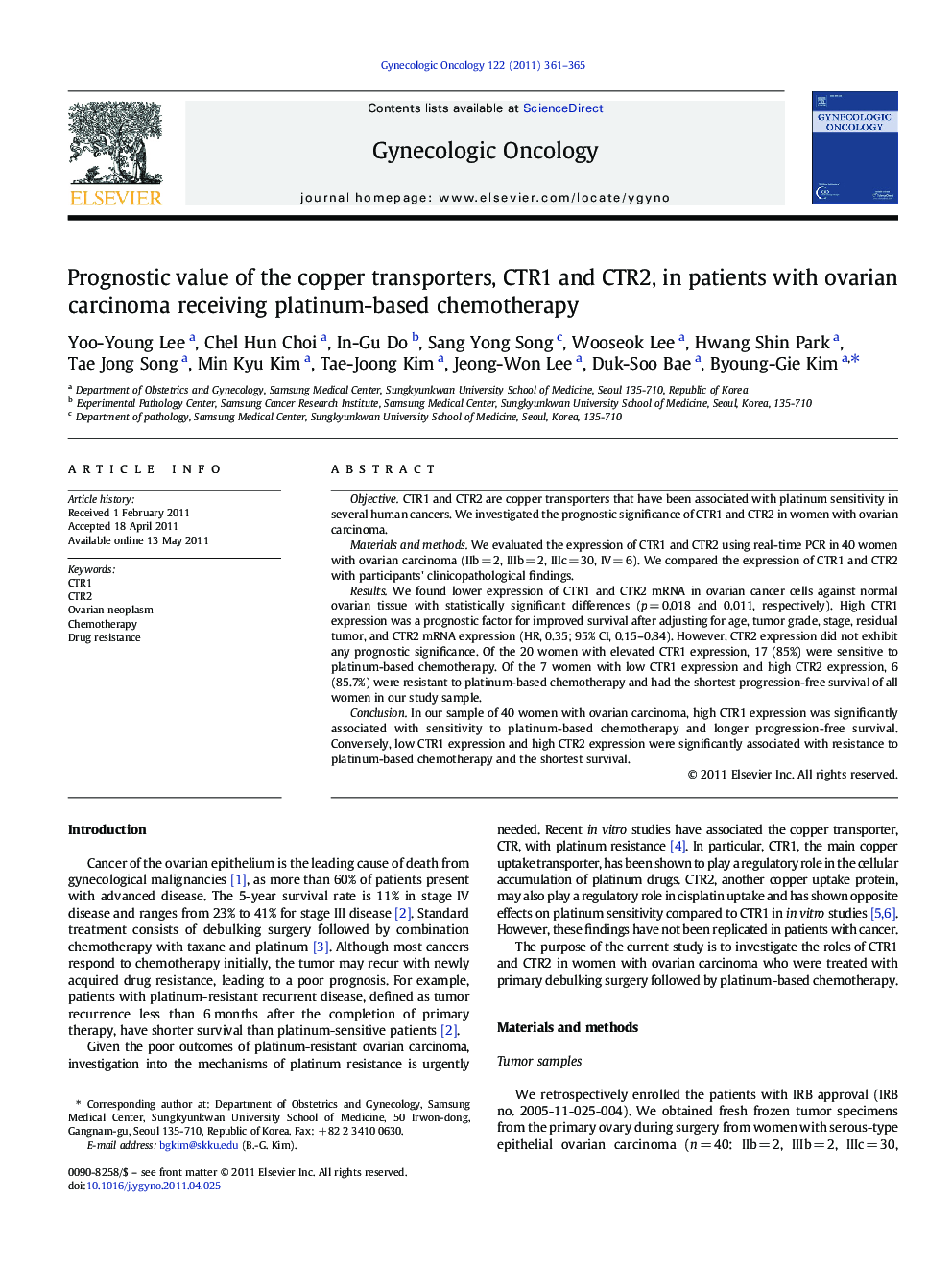| Article ID | Journal | Published Year | Pages | File Type |
|---|---|---|---|---|
| 3947094 | Gynecologic Oncology | 2011 | 5 Pages |
ObjectiveCTR1 and CTR2 are copper transporters that have been associated with platinum sensitivity in several human cancers. We investigated the prognostic significance of CTR1 and CTR2 in women with ovarian carcinoma.Materials and methodsWe evaluated the expression of CTR1 and CTR2 using real-time PCR in 40 women with ovarian carcinoma (IIb = 2, IIIb = 2, IIIc = 30, IV = 6). We compared the expression of CTR1 and CTR2 with participants' clinicopathological findings.ResultsWe found lower expression of CTR1 and CTR2 mRNA in ovarian cancer cells against normal ovarian tissue with statistically significant differences (p = 0.018 and 0.011, respectively). High CTR1 expression was a prognostic factor for improved survival after adjusting for age, tumor grade, stage, residual tumor, and CTR2 mRNA expression (HR, 0.35; 95% CI, 0.15–0.84). However, CTR2 expression did not exhibit any prognostic significance. Of the 20 women with elevated CTR1 expression, 17 (85%) were sensitive to platinum-based chemotherapy. Of the 7 women with low CTR1 expression and high CTR2 expression, 6 (85.7%) were resistant to platinum-based chemotherapy and had the shortest progression-free survival of all women in our study sample.ConclusionIn our sample of 40 women with ovarian carcinoma, high CTR1 expression was significantly associated with sensitivity to platinum-based chemotherapy and longer progression-free survival. Conversely, low CTR1 expression and high CTR2 expression were significantly associated with resistance to platinum-based chemotherapy and the shortest survival.
Research highlights► In patients with serous ovarian cancer. ► CTR1 is responsible for platinum sensitivity. ► CTR1 can be a prognostic factor for survival.
